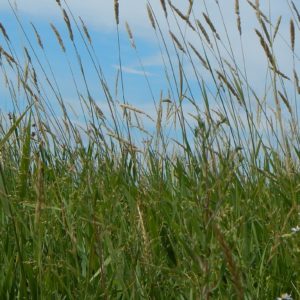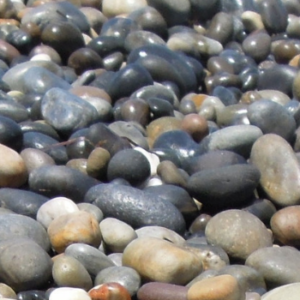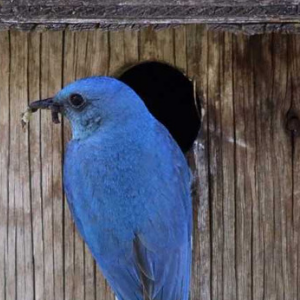Species Spotlight: Horned Grebe
Get to know some of the species at risk in the Lac Deschênes IBA with the Species Spotlight, aka “Sp-Spot”. Today meet the:
Horned Grebe
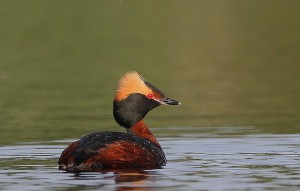
Breeding plumage
Photography by Steve Garvie
Scientific Name: Podiceps auritus
SARA Status: No status; the Magdalen Island population is listed as Endangered; Ontario: Special Concern; Quebec: Threatened
Taxonomic Group: Birds
Size: On average a length of 31-38 cm, weighing 300-570g, with a wingspan of 55-64 cm
The Horned Grebe gets its name from its yellow “horns” which are actually tufts of feathers just behind the bird’s eyes. The yellow “horns” along with red coloured feathers of the upper chest and neck and black cheeks make up the very distinctive breeding plumage of both the male and female. The breeding plumage is so different from the drab black and white winter plumage of the Horned Grebe that you might not think you are even looking at the same bird.
Like most diving ducks, the Horne Grebe is awkward on land and spends most of its time floating on the water or diving in search of the fish, aquatic insects and crustaceans that it eats.
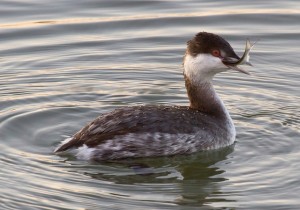
Winter plumage
Photography by Laura Gooch
Where else can you see this species?
Over 90% of the this bird’s North American breeding population is found in wetlands across Canada, making the Horned Grebe distinctly born and bred in Canada. There is also a small isolated breeding population in far eastern Quebec where the home range is limited to the Magdalen Islands.
Did You Know?
• The chicks are able to swim and dive as soon as they hatch. However, they prefer to ride on the backs of their parents, and will even hang on while the parents dive for food.
• Horned Grebes will eat their own feathers to create a matted plug in their stomach which helps to store food such as fish bones until it can be digested. Parents will even feed feathers to the chicks to help them develop their own ‘plug’. This is a behaviour unique to Grebes.
• Because over 90% of this bird’s breeding grounds are within Canadian wetlands, the continued destruction of marshes and waterways is a major threat to the survival of this species.
Check back every week to read about a different species at risk that can be found in Lac Deschênes.
You can report sightings of this and other rare species to the Canadian Wildlife Service at (819) 997-2800 or on the MNR Natural Heritage Information Centre website. A photo and a location are very helpful!


